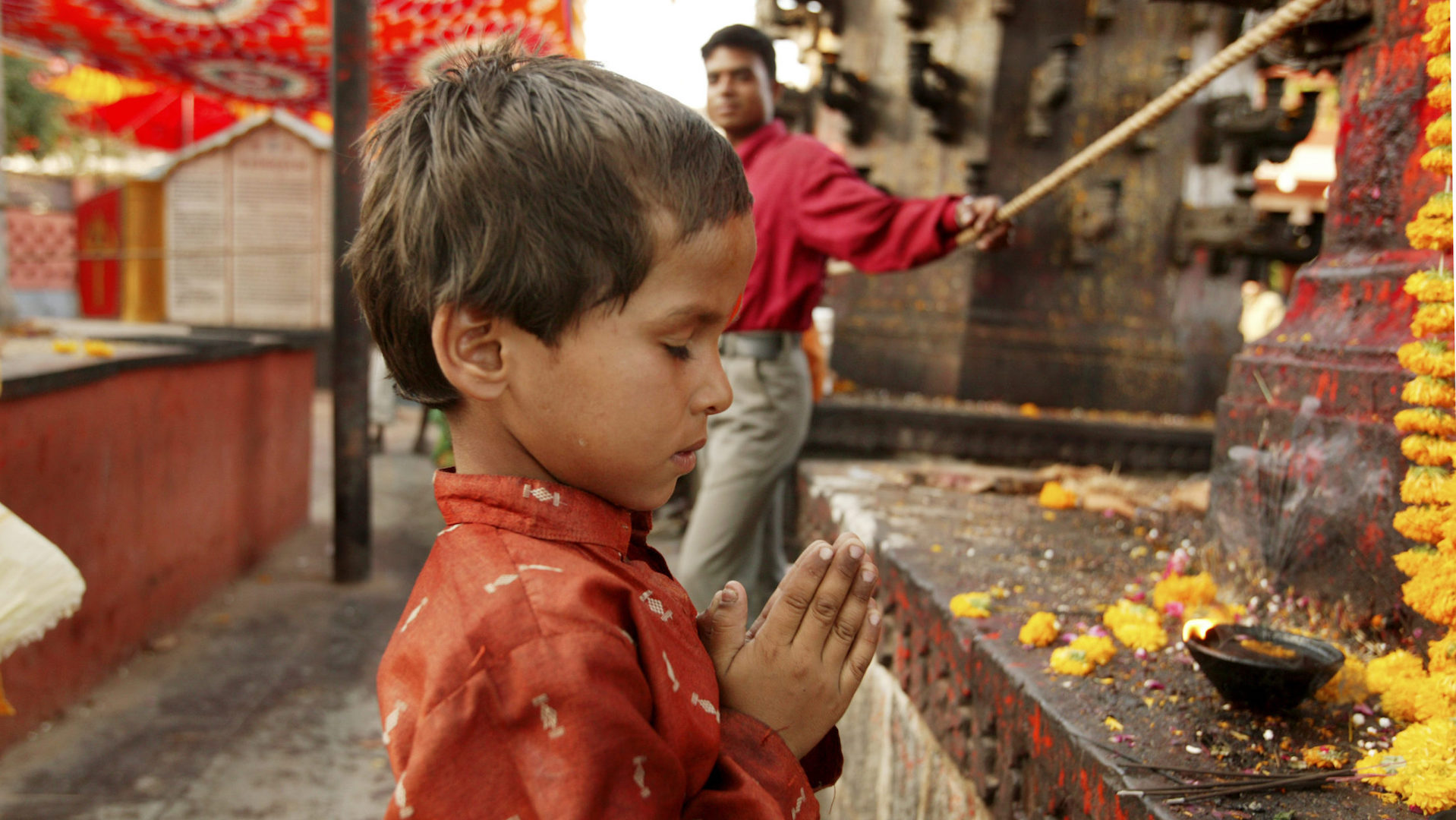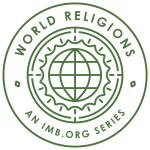
 The story of Hinduism is somewhat elusive.
The story of Hinduism is somewhat elusive.
There is no definitive starting point, no founder, no single holy text in the history of Hinduism. Even the term “Hinduism” as we know it today is the result of the British attempt, during colonial times, to group India’s numerous indigenous religions into a single, overarching tradition.
But though the formation of Hinduism is relatively recent, Hindu beliefs and practices derive from ancient customs going back thousands of years. Some scholars believe Hinduism is the oldest religion in the world.
The Formation of Hinduism
It’s difficult to trace the early history of Hinduism, but the word Hindu is from the Sanskrit word for the Indus River, “Sindhu.” It was first used by ancient Persians to refer to the people living near the Indus River in present-day Pakistan. Later, as Islam became a major influence in India, the word Hindu designated anyone who was not Muslim. During colonial times, the British used “Hindu” to mean anyone—Buddhist, Jain, Sikh included—who was not a Muslim, Christian, or Jew.
Scholars believe it was from this Indus Valley civilization that Hinduism emerged, prompted by cultural and political changes in the region. Nomadic tribes from eastern Europe and central Asia migrated into the valley around 1500 BC and brought with them their own social and spiritual beliefs that influenced and mingled with the religions of the Indus Valley people.
The Vedic Period, when sacred Hindu texts called the Vedas were composed, lasted from around 1500 BC to 500 BC, up to the time of Buddha. During this era, the priestly class of Brahmins used the Vedas—a vast collection of hymns, poems, and spiritual rituals in the ancient language of Sanskrit—to conduct religious rituals, perform fire sacrifices to gods, and stake their claim at the top of a caste system, which developed during Vedic times.
This social hierarchy, based on a division of labor, included priests, warriors, merchants, laborers, and those who did not fall into any category who were later called “untouchables.” Eventually, the rules of the caste system became entwined with the practice of Hinduism.
New Inspiration and Influences
As Vedic culture declined, new systems of belief emerged, including Buddhism and Jainism, that challenged the Brahmin priests and their caste hierarchy. However, the Epics and the Puranas—additional sacred Hindu texts—were probably composed during this time between 500 BC and AD 500. Many elements recognized in Hinduism today originate from these writings, including rituals, temple worship, festivals, and popular stories about Hindu gods. From AD 500, temple worship and devotion to deities such as Vishnu, Shiva, and Brahma became popular.
“Hinduism has now grown to become the world’s third largest religion, after Christianity and Islam.”
By the seventh or eighth century AD, Islam was on the rise in northern India. Muslim armies invaded parts of India, sometimes destroying Hindu temples and restricting Hindus from worshiping their deities. Muslim rule in India lasted from around 1200 until the 1750s. Then, as European powers began their scramble for colonies in Asia, the British established themselves in India in 1757.
Under British rule, the fusion of India’s myriad philosophies, beliefs, and rituals began to take shape. The British “creation” of Hinduism was an attempt to organize the diverse, indigenous practices, and worship of gods and goddesses throughout India. With the help of Brahmin priests, British scholars interpreted the Vedas from Sanskrit and presented them as the uniform, authoritative texts of Hinduism.
At first, Hindus were allowed to practice their religion without interference, but soon the British advocated for westernizing India. This led to a rising alarm at the cultural changes taking place and set the stage for a Hindu reformer named Mahatma Gandhi. Gandhi’s belief in universal truth (all paths lead to god) and nonviolence informed his hope for religious tolerance in India. He went on to lead a nonviolent movement for India’s independence, which it achieved in 1947. His teachings continue to be revered today by Hindus and non-Hindus alike.
Hinduism Today
Hinduism has now grown to become the world’s third largest religion, after Christianity and Islam. There are an estimated 950 million followers worldwide, and almost 80 percent of India’s population is Hindu. Hinduism is also common in Nepal and Sri Lanka and has attracted followers from Western cultures too.
One of the most famous converts was Beatles guitarist George Harrison to a branch of Hinduism called Hare Krishna. Following his death, Harrison’s ashes were scattered on the waters of India’s sacred Ganges river, believed to have its source at the god Vishnu’s feet. For Hindus, the scattering of ashes on the Ganges river symbolizes the soul’s journey toward becoming one with ultimate reality. Many Hindus travel to the banks of the sacred Ganges to await death, believing that if you die in this holy spot, your soul is released from the cycle of reincarnation and achieves salvation.
There remains a wide gap separating deep spiritual understanding from local, superstitious practices, but Hinduism continues to evolve in response to social and cultural changes in India. Whatever the changes, the view that all paths lead to god persists.
Leigh Merryman is a writer for IMB. She serves with her family in Southeast Asia.

